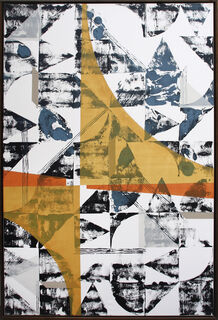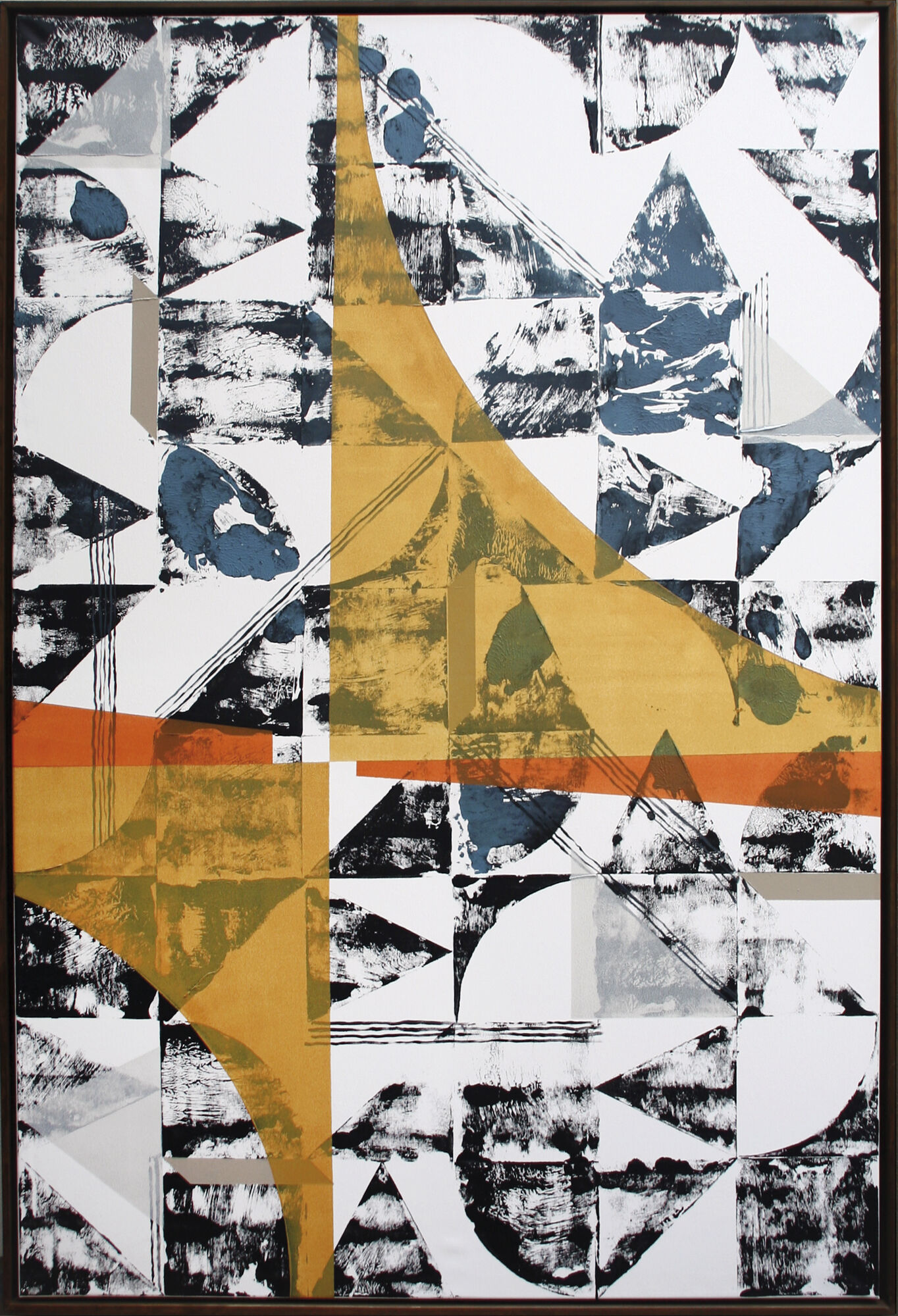Picture "Untitled (025)" (2016) (Unique piece)
Picture "Untitled (025)" (2016) (Unique piece)
Quick info
unique piece | signed | acrylic on canvas | framed | size 180 x 120 cm
Detailed description
Picture "Untitled (025)" (2016) (Unique piece)
Acrylic on canvas, 2016. Signed. Size in frame 180 x 120 cm as shown.
Producer: ars mundi Edition Max Büchner GmbH, Bödekerstraße 13, 30161 Hanover, Germany Email: info@arsmundi.de

About Christian KERA Hinz
Geometric forms that combine to form both spatial and abstract designs are characteristic of Christian Hinz, who was born in Berlin in 1885. With the artist's name KERA, he makes grey washed concrete façades disappear under flat, stencil-like fields of colour. He loves working on large surfaces, which set the scene for his designs particularly strongly.
Hinz completed his graphic design studies in his hometown in 2012. He develops his designs on the computer and then applies them with a brush, spray can and wall paint on building facades mostly for festivals, in cities such as Berlin, Hanover, Munich and Würzburg. His works are a mixture of styles, such as Op Art, Colorfield Paintings and Hard Edge Paintings, which is a technique that is characterised by their sharply delineated colour fields, which can also be found in KERA's works.
Term for paintings and sculptures that are detached from representational depiction, which spread across the entire western world and parts of the eastern world from around 1910 onwards in ever new stylistic variations. The Russian painter Wassily Kandinsky, born in 1866, is considered the founder of abstract art. Other important artists of abstract art are K.S. Malewitsch, Piet Mondrian, and others.
A one-of-a-kind or unique piece is a work of art personally created by the artist. It exists only once due to the type of production (oil painting, watercolour, drawing, lost-wax sculpture etc.).
In addition to the classic unique pieces, there are also the so-called "serial unique pieces". They present a series of works with the same colour, motif and technique, manually prepared by the same artist. The serial unique pieces are rooted in "serial art", a genre of modern art that aims to create an aesthetic effect through series, repetitions, and variations of the same objects or themes or a system of constant and variable elements or principles.
The historical starting point is considered to be Claude Monet's "Les Meules" (1890/1891), where, for the first time, a series was created that went beyond a mere group of works. The other artists, who addressed to the serial art, include Claude Monet, Piet Mondrian and above all Gerhard Richter.


